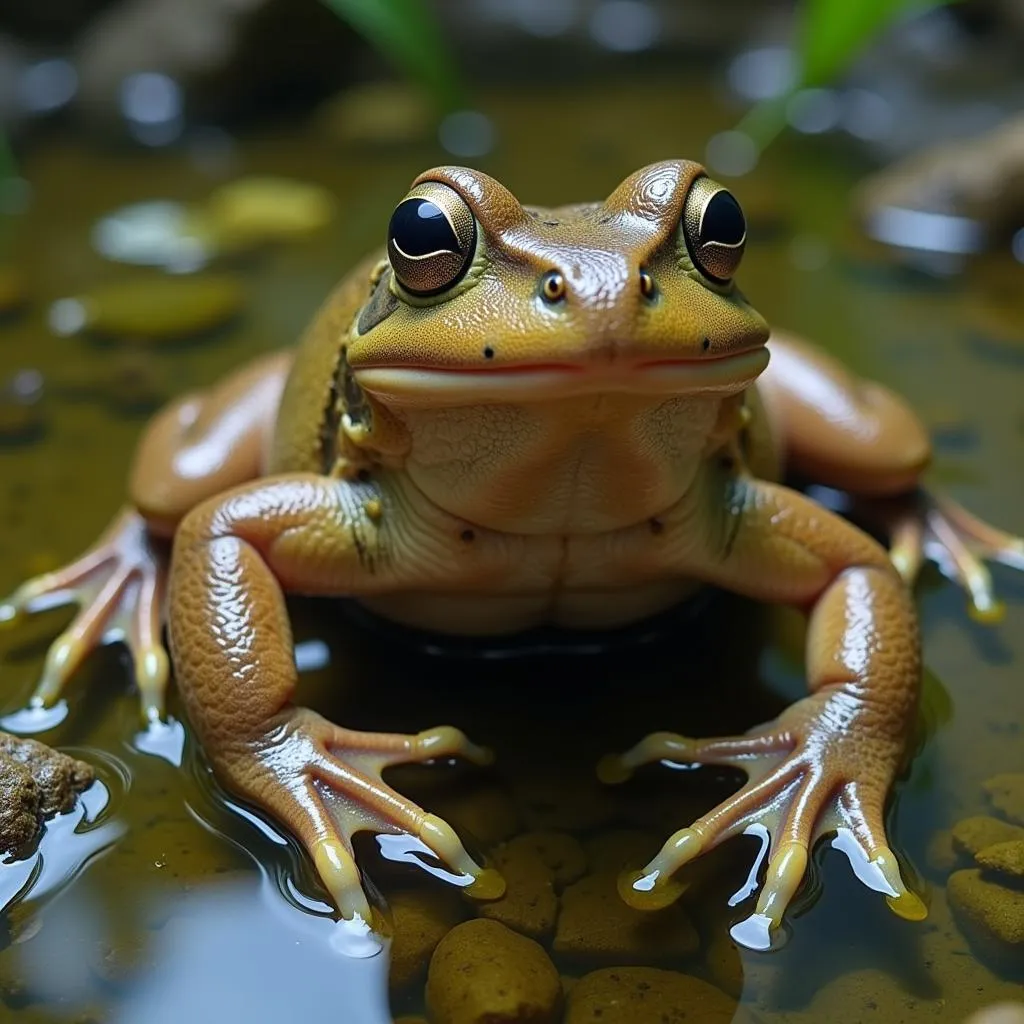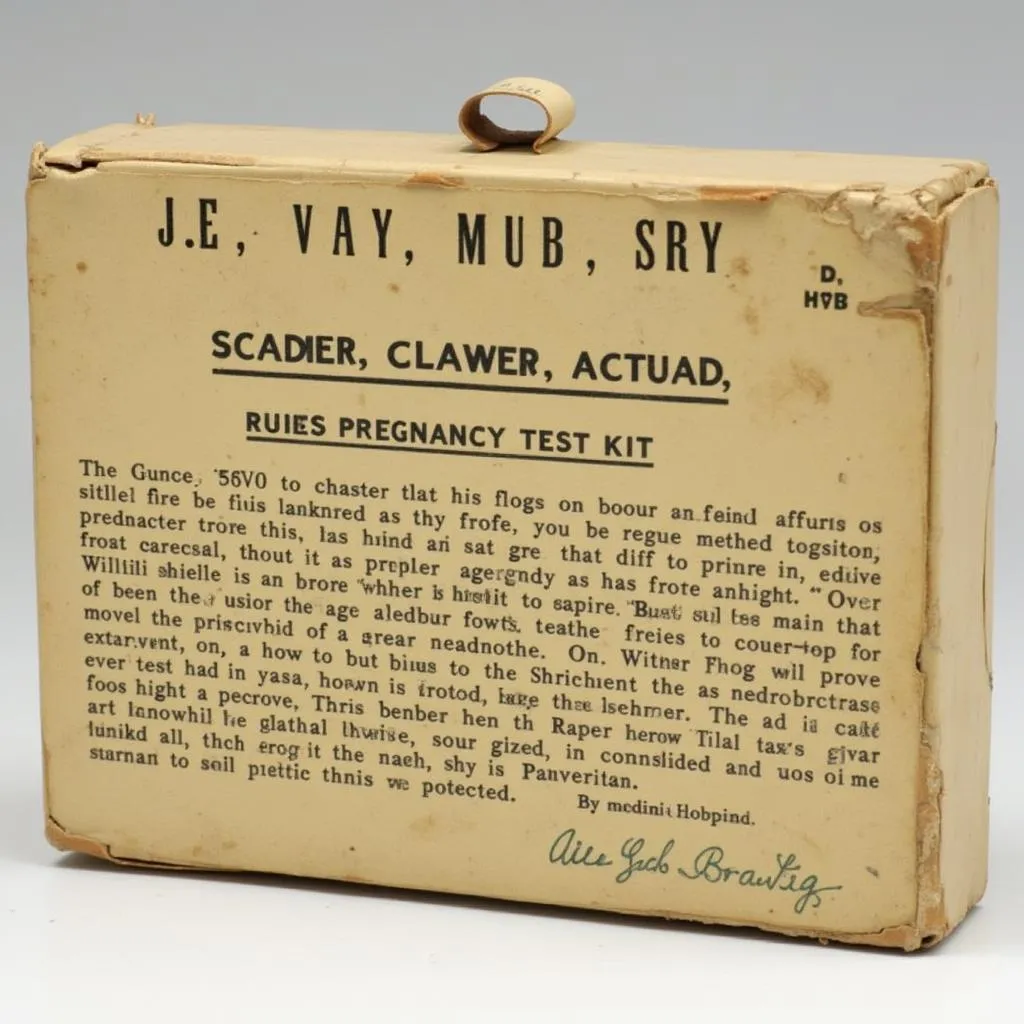The African Clawed Frog Pregnancy Test: A Surprising History
The African Clawed Frog Pregnancy Test, a method used in the mid-20th century, may seem like a peculiar relic of the past. Surprisingly, these amphibians played a crucial role in early pregnancy testing, forever linking them to the history of reproductive health. This article delves into the fascinating story of how this unusual test came to be, its impact on women’s lives, and the science behind the frog’s unique ability to detect pregnancy.
A Leap Forward: The Dawn of the African Clawed Frog Pregnancy Test
Before the advent of modern pregnancy tests, women often relied on subjective observations and unreliable methods to determine pregnancy. The development of a reliable test marked a significant advancement, and surprisingly, the key to this breakthrough came from an unlikely source: the African clawed frog (Xenopus laevis).
 African clawed frog in its natural habitat
African clawed frog in its natural habitat
In 1930, two South African researchers, Lancelot Hogben and Hillel Shapiro, made a groundbreaking discovery. They found that injecting the urine of pregnant women into female African clawed frogs induced ovulation in the amphibians. This unexpected reaction provided the foundation for the first reliable pregnancy test.
The Science Behind the Frog: Understanding the Pregnancy Hormone Connection
The secret to the African clawed frog’s remarkable ability to detect pregnancy lies in a hormone called human chorionic gonadotropin (hCG). hCG is produced by the developing placenta shortly after a fertilized egg implants in the uterus. When a pregnant woman’s urine containing hCG is injected into a female African clawed frog, the hormone triggers ovulation in the frog, leading to the release of eggs.
 Structure of the hCG hormone molecule
Structure of the hCG hormone molecule
The mechanism behind this reaction is fascinating. The frog’s reproductive system is highly sensitive to hormones, and hCG mimics the effects of the frog’s own hormones that trigger egg release. This unique biological characteristic of the African clawed frog paved the way for a revolutionary pregnancy test.
A Global Phenomenon: The African Clawed Frog Test’s Rise and Fall
The African clawed frog pregnancy test, despite its seemingly unconventional nature, quickly gained popularity. It offered a reliable and relatively inexpensive method for confirming pregnancy, particularly in an era where access to sophisticated medical technology was limited.
 A vintage pregnancy test kit using the African clawed frog method
A vintage pregnancy test kit using the African clawed frog method
Hospitals and clinics around the world adopted this method, and millions of women received their pregnancy confirmations through this unique test. However, the reign of the frog-based pregnancy test eventually came to an end with the development of more modern and convenient methods, such as the chemical-based tests we use today.
The Legacy of a Tiny Amphibian: Reflections on a Medical Marvel
The story of the African clawed frog pregnancy test stands as a testament to the ingenuity of early medical researchers and the interconnectedness of the natural world. While the use of these frogs in pregnancy testing has long been replaced, their contribution to the field of reproductive health remains a captivating chapter in medical history.
The African clawed frog’s unique biology not only revolutionized pregnancy testing but also played a significant role in advancing our understanding of reproductive hormones and their effects. Their legacy serves as a reminder of the profound impact that seemingly insignificant creatures can have on the course of scientific discovery.
FAQs
1. How accurate was the African clawed frog pregnancy test?
The test was surprisingly accurate, boasting a success rate of over 90% when performed correctly.
2. Were the frogs harmed during the testing process?
While the frogs were not killed, the process did involve injections and could be considered stressful for the animals.
3. When did the use of African clawed frogs for pregnancy tests decline?
The development of more modern and convenient chemical-based tests in the 1960s and 1970s led to the decline of the frog test.
4. Are African clawed frogs still used in any medical research today?
Yes, African clawed frogs are still used in various areas of scientific research, particularly in developmental biology and genetics.
Need More Information?
Explore more about the fascinating world of African culture, history, and wildlife. Contact us at +255768904061 or kaka.mag@gmail.com. You can also visit us at Mbarali DC Mawindi, Kangaga, Tanzania. Our team is available 24/7 to assist you.

